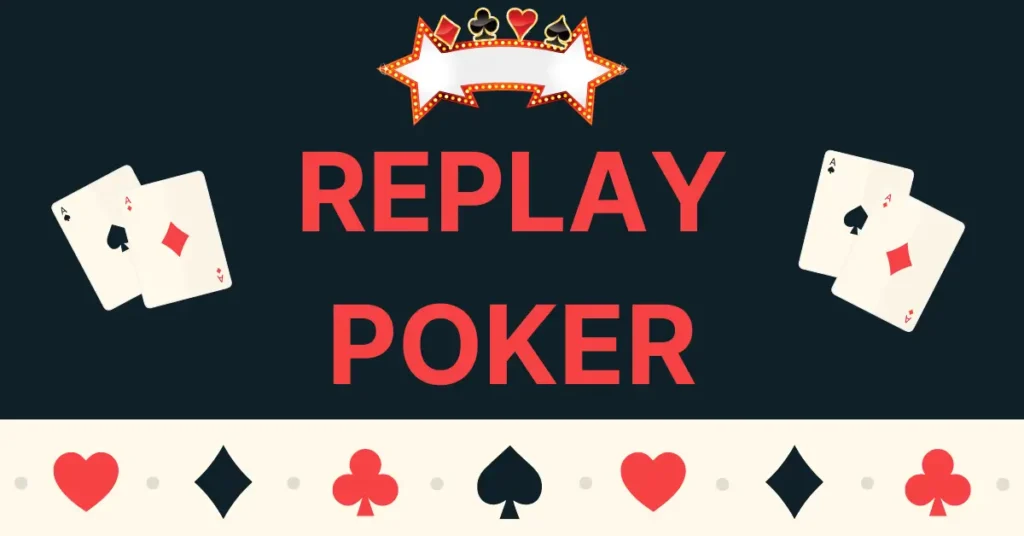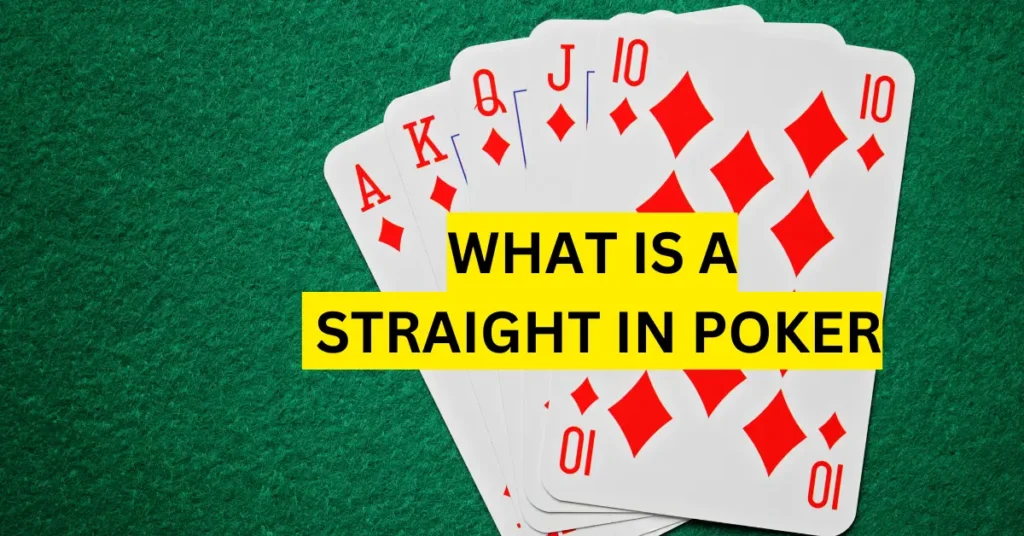Table of Contents
Poker, a game known for its strategic complexity and psychological nuances, introduces players to various terms and tactics that shape the gameplay. One such move that sparks curiosity and debate at the poker table is the “straddle.”
In this comprehensive guide to What is a Straddle in Poker, we’ll unravel the layers of the straddle, exploring its definition, its impact on the game dynamics, and the strategic considerations surrounding this intriguing poker move.
What is a Straddle in Poker?
A straddle in poker refers to a voluntary blind bet made by a player before receiving their hole cards. It’s a unique move that alters the standard betting structure, injecting additional complexity into the hand right from the start. Players opting for a straddle position themselves differently, both in terms of risk and potential reward.

How It Works
The straddle occurs during the betting preflop phase, typically in cash games. The player in the straddle position places a bet that is twice the big blind, effectively kickstarting the betting action before any cards are dealt. This additional bet influences subsequent betting rounds, setting the stage for a more dynamic and potentially lucrative game.
THE CLASSIC UTG STRADDLE
The Classic UTG Straddle, a poker maneuver akin to turning up the heat, involves the under-the-gun (UTG) player strategically placing a blind bet before the cards are dealt. Positioned immediately to the left of the big blind, this bold move from an early position aims to influence the game dynamics, injecting excitement into the initial betting rounds. It’s a tactical choice for players looking to set the tone and seize control right from the start.
THE MISSISSIPPI STRADDLE
Contrary to the conventional straddle committed by the player under the gun, the Mississippi Straddle adds a twist to the poker narrative. This variant allows players to post a straddle bet from any position at the table, breaking free from the traditional constraints. Offering flexibility and unpredictability, the Mississippi Straddle injects an element of surprise into the game, as players can spice up the action from various positions.
THE BUTTON STRADDLE
In the realm of poker innovation, the Button Straddle stands out as a relatively rare but intriguing type of straddle. Executed by the player seated on the button, this voluntary blind bet doubles the stakes while preserving the positional advantage. The Button Straddle significantly impacts position dynamics during the hand, presenting strategic opportunities for the daring player who aims to elevate the excitement and complexity of the game.
The Impact of Straddling
Psychological Element
Beyond its immediate impact on the betting structure, the straddle introduces a psychological element to the game. Players must navigate the altered dynamics, making strategic decisions based on incomplete information. The uncertainty introduced by the straddle can lead to both cautious plays and bold moves, creating a dynamic and unpredictable atmosphere.
Game Dynamics
Straddling alters the traditional flow of the game, influencing the decisions of other players at the table. The move can prompt a chain reaction, affecting the size of subsequent bets and the overall pace of the game. Understanding the strategic implications of the straddle is crucial for any player looking to navigate these unique scenarios effectively.
Strategic Considerations
Advantages
Players employing the straddle strategically aim to gain specific advantages. These can include seizing control of the betting action, generating larger pots, and capitalizing on the uncertainty introduced by the move. Recognizing when to use the straddle as a tool can elevate a player’s overall poker strategy.
Risks
While the straddle presents opportunities, it also carries inherent risks. Placing a significant bet before seeing any cards requires careful consideration. Players must weigh the potential benefits against the increased exposure to losses, ensuring that the decision aligns with their overall game plan.
Pros of Straddling in Poker
- Increased Action: Straddling often stimulates more aggressive play, fostering a livelier atmosphere at the poker table and potentially attracting players seeking heightened excitement.
- Positional Advantage: Straddling allows players to gain a positional advantage, especially in the Button Straddle variant. This can influence the dynamics of the hand and offer strategic benefits to the straddling player.
- Psychological Pressure: Straddling can exert psychological pressure on opponents, disrupting their usual game plan and inducing them to make suboptimal decisions.
Cons of Straddling in Poker
- Encourages Loose-Play: Straddling may lead to a looser and more aggressive playing style among participants, introducing an element of unpredictability that some players may find challenging to navigate.
- Risk of Increased Variance: The aggressive nature associated with straddling can result in higher variance, potentially leading to more significant swings in chip stacks and outcomes.
- Financial Implications: Straddling involves an additional blind bet, and if not strategically employed, it can lead to unnecessary financial risk without commensurate rewards.
When Should You Straddle in Poker?
Straddling is a strategic move that should be employed judiciously. Consider straddling when:
- You want to inject more action into the game.
- Your table dynamics suggest an opportunity to exploit opponents with a well-timed straddle.
- You are comfortable managing the potential risks and variance associated with straddling.
Conclusion
In the realm of poker strategy, the understanding of What is a Straddle in Poker turns into a bold and potentially rewarding move. Whether employed for its psychological impact or as a strategic tool, understanding the intricacies of the straddle is essential for any serious poker player.
As you embark on your poker journey, consider the role of the straddle not just as a betting tactic but as a dynamic element that adds depth and excitement to the game.
FREQUENTLY ASKED QUESTION (FAQ)
Can a Poker Straddle Make the Game Smaller?
While a straddle increases the stakes, it may paradoxically result in a smaller effective game size. Players uncomfortable with higher stakes might opt to fold, effectively reducing the player pool and the overall game dynamics.
Is Straddle a Bad EV in No-Limit Hold’em?
The Expected Value (EV) of straddling in No-Limit Hold’em depends on various factors. Straddling can increase action but might be a negative EV play if opponents adjust skillfully. Understanding table dynamics and opponents’ tendencies is crucial to making straddling decisions.
What Are the Alternatives to Straddling?
1. Limping Strategy:
Employ a limping strategy, entering the pot with a flat call instead of a straddle. This can be a more conservative approach to gradually building pots.
2. Aggressive Betting:
Instead of straddling, play hands more aggressively by raising and re-raising strategically. This maintains control without relying on a straddle-induced dynamic.
3. Positional Awareness:
Focus on utilizing positional advantage rather than introducing a straddle. Smart play based on position can achieve similar outcomes without the potential downsides of straddling.
- Top 5 Crypto Gainers Today – Jul 01, 2025
- Top 5 Crypto Gainers Today – Jun 30, 2025
- Top 5 Crypto Gainers Today – Jun 29, 2025
- Top 5 Crypto Gainers Today – Jun 28, 2025
- Top 5 Crypto Gainers Today – Jun 27, 2025

Prasanth is an experienced crypto trader and writer with 5 years of expertise in blockchain technology, cryptocurrency markets, and trading strategies. He specializes in creating insightful, easy-to-understand content that helps readers stay informed about the latest trends, investment opportunities, and security best practices in the crypto space. With a deep passion for digital assets and a commitment to providing valuable, trustworthy information, Prasanth empowers both beginners and experienced traders to make informed decisions in the fast-evolving world of cryptocurrency.


